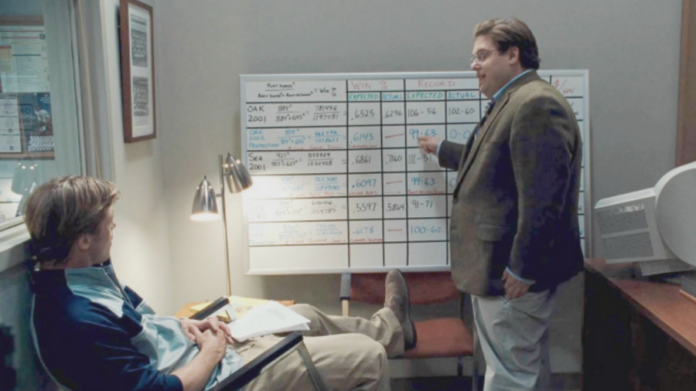Who doesn’t love a good sports film? Let me take you back to 2011 when Moneyball, the quintessential American baseball movie, premiered and became a colossal hit.
Moneyball profiles the 2002 season for the Oakland Athletics baseball team. With a minuscule budget that is literally a fraction of the league’s premier teams, the general manager is forced to build a team composed of undervalued players (sounds a lot like the “get better results with less” message we’re all used to these days). Bucking the traditional ways teams are assembled, the team’s general manager uses a uniquely data-driven approach to scout and analyse potential players for his roster. Rather than looking for the obvious big stars, the data tells a story of players with less appeal but hidden potential. I won’t give away the ending, but suffice it to say, the method has its benefits.
Fast forward to the world of marketing. When we find hidden gems in our data, we experience “Moneyball moments” – times when data leads us down a non-traditional path and delivers a win. The heartbeat of your B2B marketing and sales operation is your customer relationship management system, commonly referred to as CRM. What Moneyball data is lurking there? Let’s explore.
How CRMs deliver Moneyball moments
At its core, your CRM is a treasure trove of data. If it’s used right, the CRM becomes a single source of truth for an organisation’s customer facing teams. With the right initial implementation to set your team on a path to success, strategic integrations that send and receive data from other applications, and regular upkeep of data entry by your go-to-market teams, your CRM’s value grows right along with your business.
“But I don’t want to spend the time to update the CRM,” says every marketer ever.
Hogwash. It can be a common misconception that the CRM drains your sales team of time and effort since they have to be constantly uploading and updating data. (AI can help with this, by the way.) In fact, your CRM should provide salespeople with new, actionable strategies to close deals more effectively. The effort your team puts in to keep the CRM up to date comes back to you in spades or, as I’d like to think, in Moneyball moments.
Manufacturing firm gets their CRM “Moneyball moment” via custom fields
Let’s look at an example featuring a global equipment manufacturing firm. This firm was happily using their CRM as most other businesses do–highly focused on the new business function. They were importing leads for new equipment purchases, tracking them through the pipeline, moving them through the opportunity stage, and closing the business.
One aspect of the business that was more of an afterthought was, well, the aftermarket. Their customers would purchase equipment and then outgrow it within a few years and come back to buy new pieces. The outdated pieces of equipment were recorded in the notes section of the CRM, which is not a good place. Why? The notes section doesn’t allow you to search or report on data.
Seeing an opportunity to expand their reselling business, the firm created a custom field in the database for used equipment for sale. They then developed a public facing webpage that featured the used equipment and was driven directly from that field. No one person had to export the data and pull it into the webpage, that was done automatically and the page was constantly updated and populated. Today, resales of equipment have emerged as a huge revenue centre for the business.
The Moneyball moment was that the data was already there. It simply needed to be recorded in a custom field and the CRM did the rest of the work.
Robotics company gets their CRM “Moneyball moment” via dashboards
Emails and reports – the CEO of a California-based robotics company had seen enough of both. Information was getting buried, and he wanted a better solution – one that his team could use internally and easily share with clients. Their Moneyball moment came in the form of dashboards–used in a non-traditional way as both the backbone of their internal operations and a customer-facing tool.
The team created a series of dashboards, including:
-
An individual contributor dashboard for teams to streamline their daily tasks and track performance.
-
A manager-level dashboard to oversee multiple projects and team members, ensuring that projects are on track and deadlines are met.
-
An executive-level dashboard with financial data, utilisation rates, and trend analysis.
-
A client-facing dashboard (the real Moneyball moment) to track all opportunity and project data, providing clients with regular, consistent updates. The team introduces the look and feel of the CRM dashboard at the beginning of an engagement so the client comes to expect this view. Rather than pulling data out of the CRM into a presentation or running reports for weekly meetings, clients have a clear line of sight through the dashboard. The team claims that the transparency of looking right into the CRM is a driver of client trust.
Keeping the CRM front and centre for both employees and customers, saving time on emails and reports, and building trust…that creates a Moneyball moment.
Getting your Moneyball moment
Just like with the Oakland As, the data for both of these examples already existed. It took one person and their “aha” moment to see the value in it, surface it in a meaningful way, and then reap the rewards of a data-driven approach to problem solving. I challenge you to think about the Moneyball moments that are living in your CRM right now and to start looking at your data as a driver of efficiency, and future growth.


 Whether you want to learn how to use LinkedIn, X or Facebook for marketing, or need to brush up on business skills like leadership, presentation skills or managing meetings, you will find something to enhance your professional skills with these on-demand courses.
Whether you want to learn how to use LinkedIn, X or Facebook for marketing, or need to brush up on business skills like leadership, presentation skills or managing meetings, you will find something to enhance your professional skills with these on-demand courses.